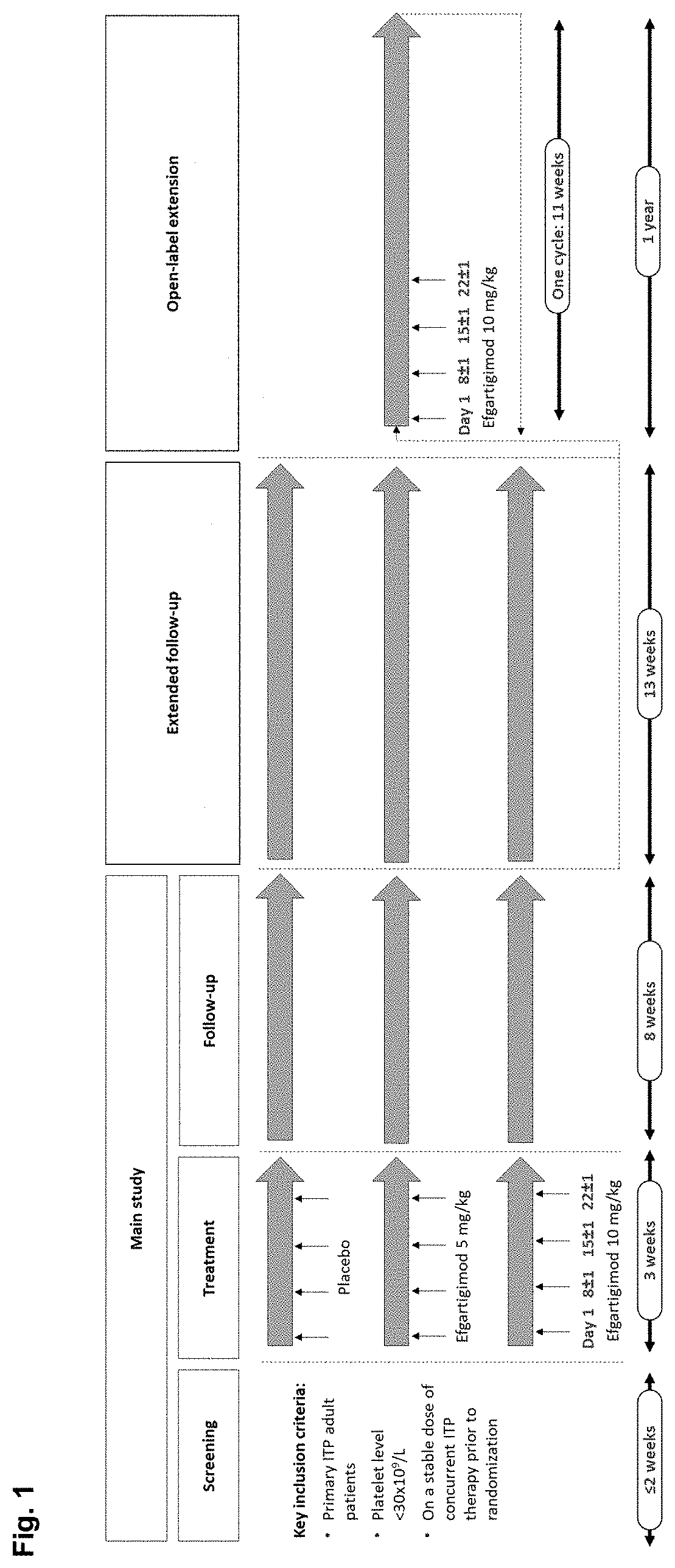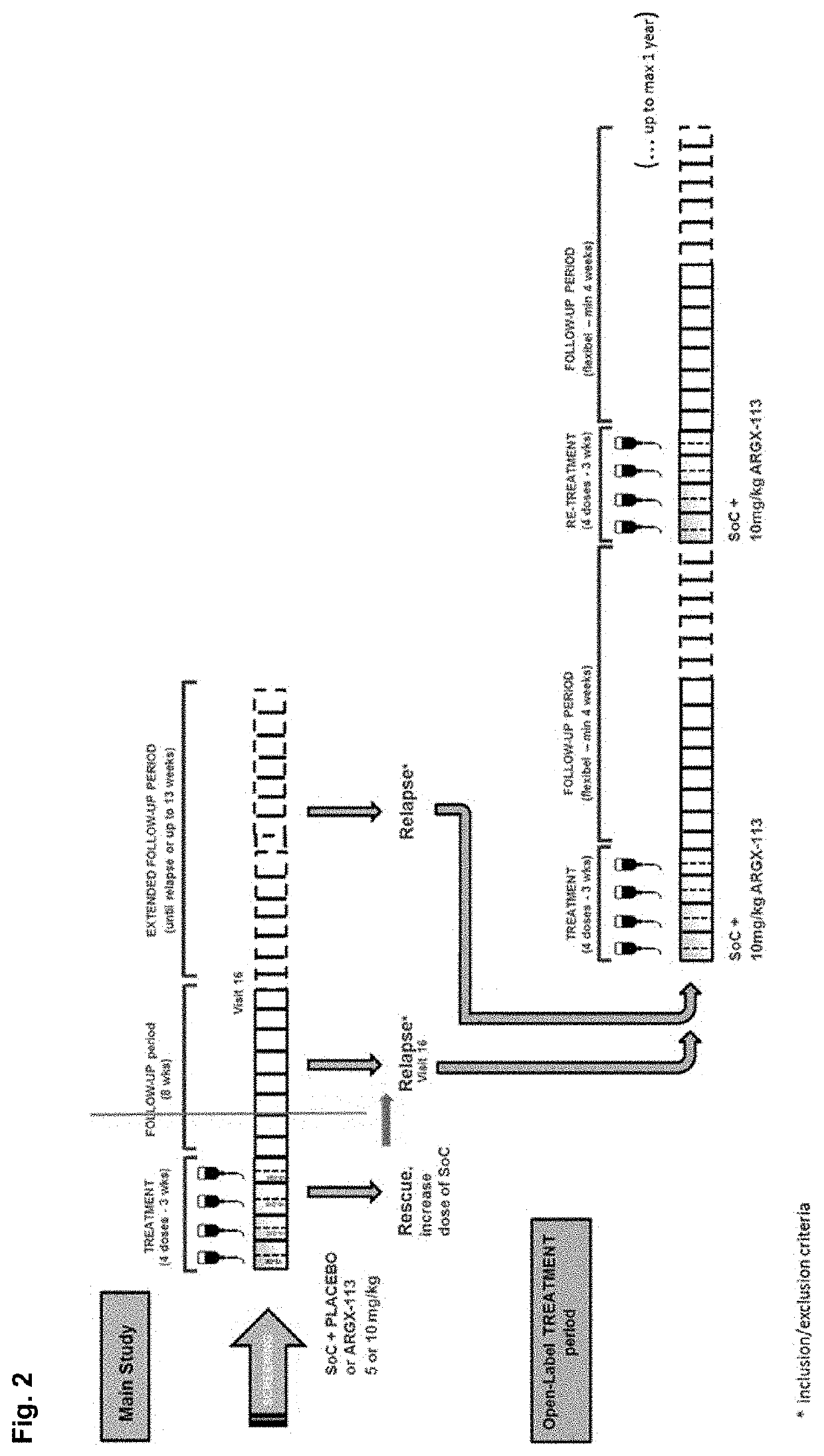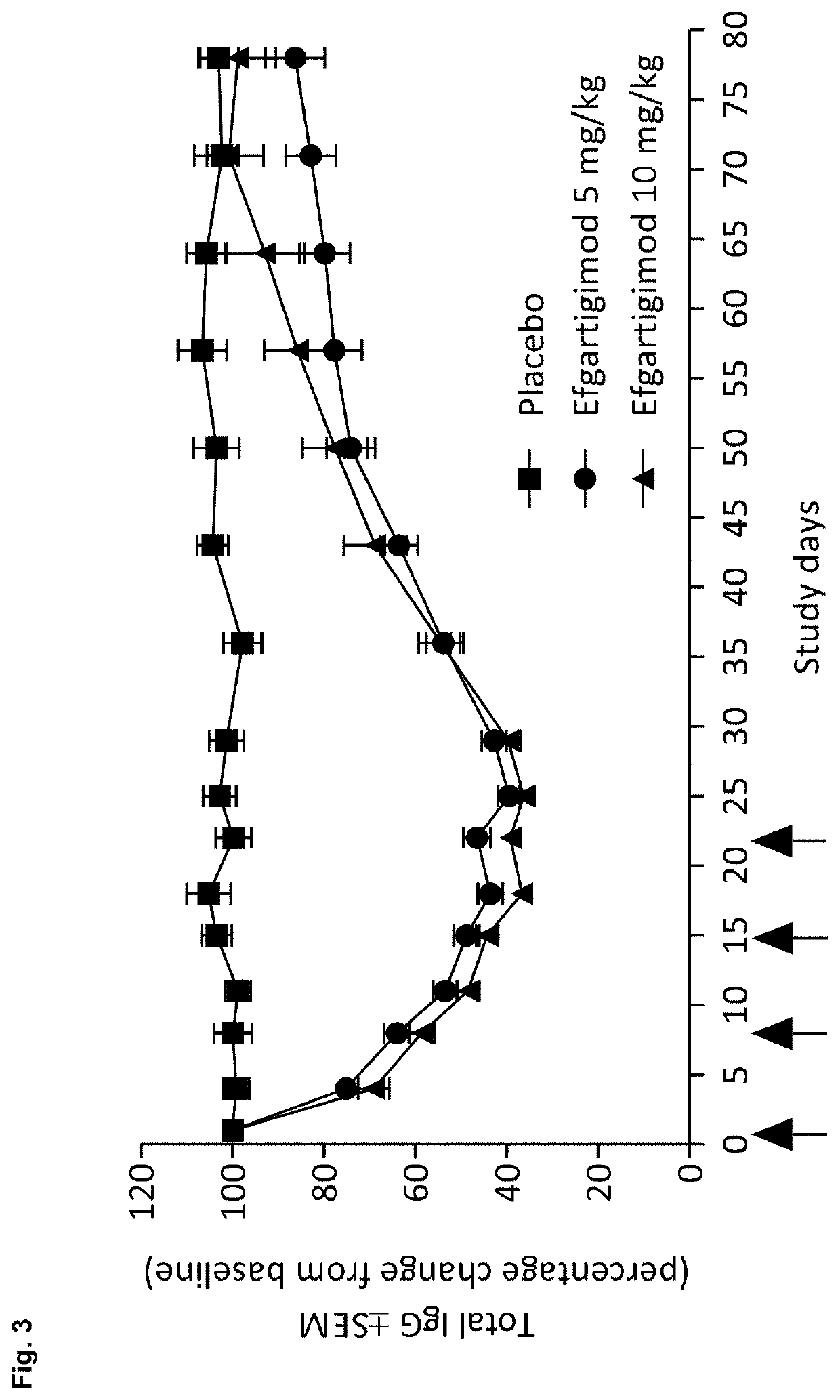Compositions and methods for treating immune thrombocytopenia
a technology of thrombocytopenia and composition, applied in the direction of peptide/protein ingredients, extracellular fluid disorder, peptide sources, etc., can solve the problems of platelet destruction, life-threatening complications, and itp patients suffering from a reduced quality of li
- Summary
- Abstract
- Description
- Claims
- Application Information
AI Technical Summary
Benefits of technology
Problems solved by technology
Method used
Image
Examples
example 1
se Toxicity Study of ARGX-113 in Cynomolgus Monkeys
[0145]ARGX-113 was administered by a 2-hour IV infusion to cynomolgus monkeys at four dose levels (10, 30, 50, and 100 mg / kg body weight [b.w.]) and controls. No ARGX-113-related signs of local intolerance were noted at any of the tested dose levels. No ARGX-113-related effects were noted on behavior, body weight, food consumption, electrocardiographic parameters, circulatory functions, hematological parameters, lymphocyte typing, urinary parameters, ophthalmological and auditory functions, and organ weights of any of the animals at any dose level. In addition, no macroscopic or microscopic systemic organ changes were noted in any of the animals examined, in particular no histopathological changes were noted in livers of the monkeys at any tested dose level.
[0146]Administration of ARGX-113 resulted in significant changes in biochemical parameters, which were considered not to be adverse in nature. A decrease in serum concentrations ...
example 2
Dose Toxicity Study of ARGX-113 in Cynomolgus Monkeys
[0148]In the repeat dose one-month toxicology study in cynomolgus monkeys, ARGX-113 was administered at 3 dose levels (3, 30, and 100 mg / kg). Ten animals, 5 male and 5 female cynomolgus monkeys, were treated at each dose level and received IV infusions every 48 hours with ARGX-113 for a total of 15 infusions. ARGX-113 was well tolerated at all doses by all animals as determined by clinical signs, body weight, macroscopic examination, histopathology, food consumption, and hematology and serum biochemistry parameters. No macroscopic ARGX-113-related changes were observed. The histopathological examination revealed liver changes at doses of 100 mg / kg ARGX-113. Liver changes included cytoplasmic alterations and degeneration, and diffuse mixed inflammatory cell infiltrates. There was no liver pathology in animals in the 100 mg / kg dose group at the end of the treatment-free recovery phase. No apparent ARGX-113-related changes were obser...
example 3
Dose Toxicity Study of ARGX-113 in Rats
[0157]In the repeat dose one-month toxicology study in rats, ARGX-113 was administered at 3 dose levels (10, 30, and 100 mg / kg). Twenty animals, ten male and ten female animals, were treated at each dose level and received IV injection every 48 hours with ARGX-113 for a total of 15 infusions. ARGX-113 was well tolerated at all doses by all animals as determined by clinical signs, body weight, macroscopic examination, histopathology, food consumption, and hematology and serum biochemistry parameters. No macroscopic ARGX-113-related changes were observed. The histopathological examination revealed test item-related histopathological lesion in the liver at doses of 100 mg / kg ARGX-113 in some animals. This lesion consisted of Kupffer cell hypertrophy / hyperplasia which was observed in both sexes of the group treated with 100 mg / kg of ARGX-113. There was no liver pathology in animals in the 100 mg / kg dose group at the end of the treatment-free recove...
PUM
| Property | Measurement | Unit |
|---|---|---|
| pH | aaaaa | aaaaa |
| pH | aaaaa | aaaaa |
| molecular weight | aaaaa | aaaaa |
Abstract
Description
Claims
Application Information
 Login to View More
Login to View More - R&D
- Intellectual Property
- Life Sciences
- Materials
- Tech Scout
- Unparalleled Data Quality
- Higher Quality Content
- 60% Fewer Hallucinations
Browse by: Latest US Patents, China's latest patents, Technical Efficacy Thesaurus, Application Domain, Technology Topic, Popular Technical Reports.
© 2025 PatSnap. All rights reserved.Legal|Privacy policy|Modern Slavery Act Transparency Statement|Sitemap|About US| Contact US: help@patsnap.com



